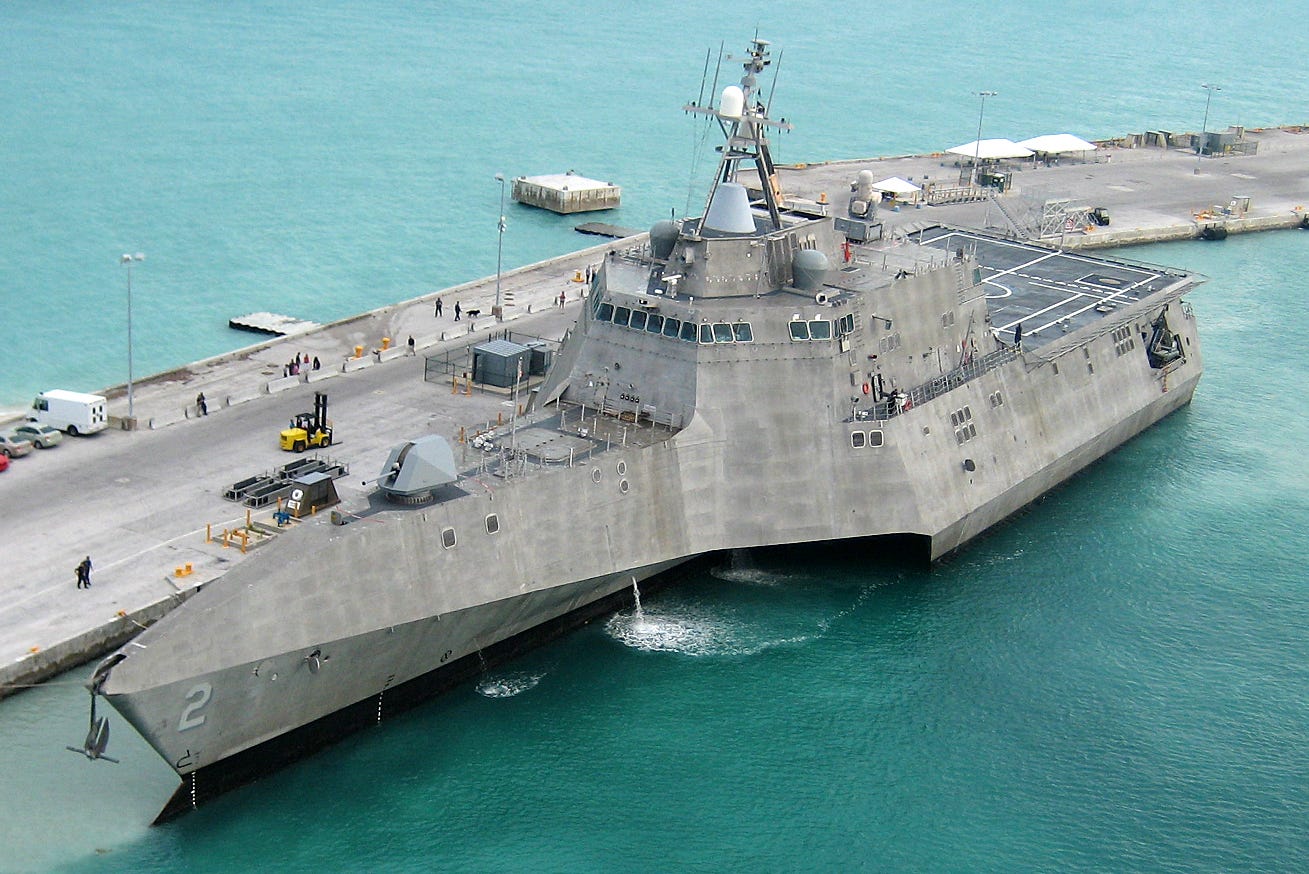Undermanned and overworked crews can’t keep Littoral Combat Ships running
Did you ever work a job that required two people, but your stingy employer insisted that one was enough? Then you understand the problem with the Navy’s Littoral Combat Ship.
One of the LCS’s supposed advantages is its much smaller crew compared to other vessels. Where a Navy frigate might have 200 sailors, the frigate-size LCS has just 40—although, to be fair, two different 40-person crews take turns running the ship.
LCS is a jack-of-all-trades warship that can carry different modules for various missions—anti-submarine warfare, surface warfare or mine-hunting.
The idea was that automation would enable fewer sailors to operate the $400-million LCS for all these missions. This saves on manpower costs as well as on precious shipboard space for crew accommodations.
But a new Government Accountability Office report proves what any Burger King worker already knows—cutting your workforce by 80 percentwithout also decreasing its workload … isn’t always a great idea.
When the GAO studied USS Freedom’s recent 10-month deployment to Singapore, the auditors found that crews worked too hard. “Freedom crews averaged about six hours of sleep per day compared to the Navy standard of eight hours,” the GAO stated.
“Some key departments, such as engineering and operations, averaged even fewer.”
And this happened despite the Navy temporarily adding 10 extra sailors to the crew and sending contractors aboard.
Missing sleep isn’t exactly a new problem for Navy sailors. But the sailing branch has workload standards for a reason. “Crew members told us that their sleep hours decreased significantly during major equipment casualties, particularly those affecting the ship’s diesel generators and other engineering systems,” the GAO explained.
USS Independence. Photo via Wikipedia
Warships naturally have to periodically return to port for replenishment and repair. But with its small crew and limited on-board maintenance capability, the LCS is particularly dependent on shore-based support. If something needs to be fixed, the LCS either returns to port or maintenance teams—supplied by private defense contractors—fly out to the ship.
During the Singapore deployment, Freedom had to report to port for five days of preventative maintenance every 25 days, plus two weeks of intensive maintenance every four months.
The result was that the Freedom spent lots of time on the sideline. Ships of the Seventh Fleet—the Navy’s Pacific force—typically spend about 20 percent of their time in port. Freedom spent 58 percent of her tour docked in Singapore.
Mechanical problems were so common that the Freedom lost 55 days at sea, which in turn limited the amount of useful data that the Navy could collect about how reliable the LCS is in the first place.
Nor was Freedom the only problem ship. Another LCS, USS Independence, spent eight months of 2013 in dock or in maintenance.
The Navy wants at least 24 LCS. But critics worry that the vessel is too fragile and too expensive. Freedom’s maintenance issues suggest that such a small crew can’t maintain the ship, let alone cope with emergencies. And one wonders how many contractors would be eager to fly out to fix an LCS in the middle of a combat zone.
The Navy might want to sleep on this. Even if the LCS’ sailors can’t.

No comments:
Post a Comment